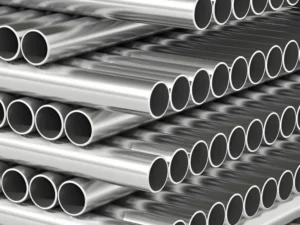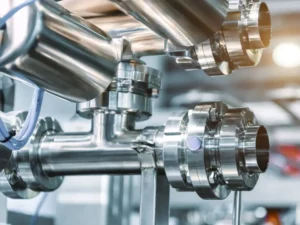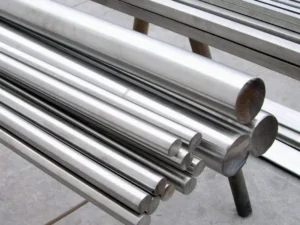Stainless steel has become part of everyday life. It is known for its versatility and strength. However, the Inox 304 stainless steel grade is the most popular and has extensive usability. It stands out due to its incredible properties. Knowing those properties is crucial before making any decision about its selection.
Therefore, many people need to familiarize themselves with this grade. Are you among those who are curious about this grade? Good news for you! In this exhaustive article, I will explore each aspect of Inox 304. By the end of this guide, you will understand why it is the most used stainless grade. So let’s get started!
Overview of Inox 304

Inox 304, also known as 304 stainless steel, is widely used. Its composition includes 18% chromium and 8% nickel as the main component, which is why it is also called 18/8 stainless steel. 18/8 indicates the ratio of chromium and nickel. These components make it corrosion-resistant, strong, and versatile.
Apart from chromium and nickel, it contains some other elements in small amounts. For example, manganese, silicon, carbon, and iron. These components contribute to improving its durability. Therefore, it is used to perform heavy-duty operations.
One thing I like about 304 stainless steel is its easy handling. All components of this grade are easy to weld, bend, and shape. Hence, its transportation becomes effortless. Moreover, it has significant temperature fluctuation resistance. This property makes it usable for construction projects.
Why is Inox 304 the Most Used Stainless Steel Grade?

Inox 304 is the most used stainless steel due to its various properties. Those properties include corrosion resistance, durability, formability, and versatility. All these properties are in demand for any project. When manufacturers find all properties in one item, they consider it without hesitation.
Another reason behind its broad use is its cost-effectiveness. This is the only stainless steel grade that is low-cost without sacrificing properties. Therefore, it is most common among small industries and large projects. Moreover, ductility is also a noteworthy concern when handling any metal.
304 stainless steel gives mind satisfaction in this regard, thanks to its nickel component. Nickel is well-known for handling pressure without breaking. Thus, this grade withstands high pressures and is appropriate for industrial parts and fittings.
Characteristics of Inox 304

Are you now familiar with Inox 304? But what makes it stand out is its unique properties. Ready to discover the secret behind Inox 304’s worldwide dominance? Let’s explore them in the section below.
1- Formability and Handling
Formability is the ability of any metal to turn into any shape. Inox 304 offers easy formability due to its flexibility. It can be changed to form various shapes, such as rectangular and circular. This property makes it ideal for making automobile parts. Besides, its flexibility makes managing and transporting to remote sites easy.
2- Strength and Durability
As I said above, inox 304 can be changed into any shape. This is achievable due to its tensile strength. This allows it to stretch and bend without breaking or deforming. Moreover, the perfect balance of each component further increases its strength. Another reason for its strength is its high melting point( 1,400 to 1,450°C). Such a high melting point makes it temperature-resistant and enhances its durability.
3- Corrosion Resistance
One of the significant properties of Inox 304 is its corrosion resistance. What makes it so? Actually, It is due to the presence of chromium. As you know, it contains 18% of chromium, a significant quantity among all the components. When chromium is exposed to oxygen, it forms an oxide layer. This oxide layer acts as a shield and protects it from corrosion. Therefore, inox 304-made products can efficiently combat humid and acidic environments.
Quick Highlight: Manufacturers make sheets with this 304 stainless steel material. Its usability is primarily because it is corrosion-resistant. Sheets made with this material remain in good shape for long. Exceptional corrosion resistance has indeed made it a favorite in the industry.
4- Aesthetic Appeal
Inox 304 comes with a natural shine. This shininess is due to the ideal combination of its components. Therefore, it is popular among architects for making unique and sleek art. Moreover, it also benefits the architects due to its long-lasting appearance. It is used for interior designs, kitchen fixtures, and building facades. You can further enhance its appearance by adding other finishing agents.
5- Non-Magnetic Nature
Inox 304 has non-magnetic properties due to its face-centered cubic structure. How? Basically, the FCC structure has no unpaired electrons to show magnetism. This nature makes it helpful in forming medical equipment and electronic and aerospace parts. But sometimes, slight magnetism appears during welding due to chromium’s paramagnetic properties. However, this is ignorable and doesn’t affect its overall functionality.
6- Low Maintenance
Inox 304 requires low maintenance as compared to other stainless steel grades. The first reason is its refined and shiny structure that resists stains. Therefore, you can use it in kitchen wares, which are more prone to food stains. Moreover, the oxide layer further decreases its maintenance. For example, this oxide layer in moist places prevents rust and makes the product durable. Besides, inox 304 doesn’t require extra coatings due to its natural shine.
7- Versatility
Due to its versatile nature, Inox 304 is not confined to one field. For example, its corrosion resistance makes it useful for outdoor and indoor applications. Its tensile strength is used in the automotive industry. Due to its stretching property, it can be shaped into wires and other complex shapes. Moreover, its aesthetic appeal serves in the architectural field. Lastly, its non-magnetic nature makes it ideal for safety and sensitive environments.
8- Yield Strength
Yield strength is a property of an object that resists deformation. Inox 304 has a significant yield strength of 205-215 megapascals (MPa). Therefore, it can withstand high pressure without deformation. You will be surprised that a cooling procedure can further enhance its yield strength up to 400 Mpa. But remember that yield strength weakens in high temperatures, making deformation more likely. Therefore, avoid using it in environments above 870°C.
9- Impact Strength
The impact strength of any material decides how it behaves in case of shocks. Inox 304 has excellent impact strength. This means it doesn’t get fractured in case of shocks and contact with a heavy load. Several tests are performed to check its impact strength.
For example, a hammer of definite weight is dropped on Inox 304 from the measured height in the Izod test. This test ensures that it can bear shocks and heavy loads during transportation. Thus, you can get several benefits from its impact strength.
10- Cost and Affordability
In terms of cost, Inox 304 is a reliable option. There are several reasons behind its cost-effectiveness. Firstly, its main components are readily available and easy to handle. Moreover, its production procedure is relatively simple. A series of simple steps is involved, such as melting, casting, and forming.
In addition, its low maintenance further decreases its overall cost. For example, its components have a long life span, reducing the cost of replacement and repair. Above all, due to its versatility, it is in demand in the market. This reduces the competition between manufacturers and decreases its cost.
Quick Highlight: Previously, I wrote a dedicated article comparing 304 and 316 stainless steels. That article indicates that 304 stainless steel is among the most affordable options among other steels. Manufacturers prefer using it when they need to make budget-friendly products.
11- Environmental Sustainability
Environmental sustainability is a primary issue when dealing with any material. Inox 304 is very advantageous in this respect. It is recyclable and reusable, which makes it environmentally friendly. Other grades of stainless steel are recyclable to some extent.
The remains of those materials are thrown or burned, which pollutes our environment. But Inox 304 is 100% recyclable. This means that it is entirely harmless to our environment. Moreover, its production process is energy efficient and does not emit harmful pollutants.
12- Hygiene and Cleanability
Another top-notch property of Inox 304 is its easy hygiene and cleanability. The question arises: how can it maintain its hygiene? It is due to its non-porous nature. If you see it in the microscope, no prominent pores can be seen. Therefore, there is no chance of the insertion of bacteria.
Moreover, its smooth surface makes it stain-resistant. As I said above, cleaning any stain from its surface is very easy. Above all, what I like is that it does not absorb odor. This means you can keep all types of food material in an Inox 304-made container. This property also increases its preservation ability.
Frequently Asked Questions
Can 304 stainless steel rust?
No, 304 stainless steel doesn’t rust in harsh, salty, or humid environments. The reason is the presence of 18% chromium. Chromium forms an oxide layer, protecting it from corrosion and rust.
How long does 304 stainless steel last?
304 stainless steel lasts for many decades. Its long life span is due to its corrosion resistance and components’ durability. With proper maintenance, such as extra paint coating, you can use it for a lifetime.
Is 304 stainless steel safe for drinking water?
Yes, it is 100% safe for drinking water. The reason is its extensive non-porous structure. This surface does not allow harmful bacteria and viruses to enter. Therefore, it is mainly used in food-preserving industries.
Conclusion
Inox 304 is the fundamental grade of stainless steel. It is famous due to its unique properties. For example, it is versatile, easy to handle, and, most importantly, corrosion-resistant. All these features make it stand out in every field. Moreover, it has an exact balance of cost-effectiveness and proper functionality.
Lastly, it is the most widely used grade of stainless steel. Such as it is used in aerospace, automotive, and medical industries. I have covered all these properties and features in detail in this article. This makes it easy for you to choose it for your desired projects.
